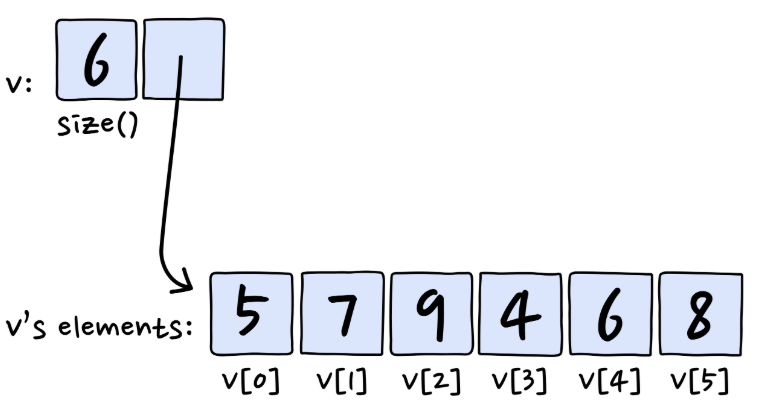- need to include
#include <vector> - more modern approach than C++ Arrays
Basics
# syntax to create a vector
std::vector<type> name;
std::vector<float> calories;
# initializing a vector
std::vector<float> calories = {42.5, -943.5}
# initializing by presizing - setting the size
std::vector<float> calories(2);
# would look like {0.0, 0.0} since 0.0 is the default value for double
# indexing
std::vector<double> subway_child = {400, 600, 750};
std::cout << subway_child[2] << "\n";Operations
# adding elems to the 'back'
std::vector<double> subway_child = {400, 600};
subway_child.push_back(750); //{400,600,750}
# remove elements from the 'back'
subway_child.pop_back(); //{400, 600};
# no return value in c++
Size
[! Size of vector]
<std::vector>not only stores the elements; it also stores the size of the vector:

.size()function returns the number of elements in the vector
Example
# first three multiples
#include <iostream>
#include <vector>
// Define first_three_multiples() here:
std::vector<int> first_three_multiples(int num)
{
std::vector<int> res = {num * 1, num*2, num*3};
return res;
}
int main() {
for (int element : first_three_multiples(8)) {
std::cout << element << "\n";
}
}